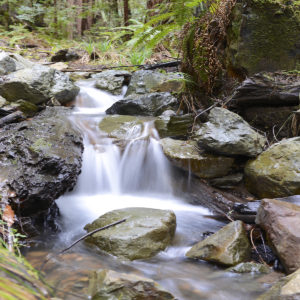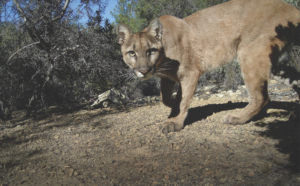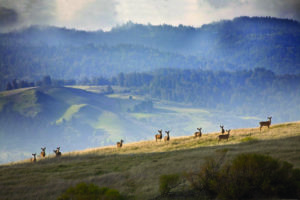The Midpeninsula Regional Open Space District is embarking on it’s first major foray into managing rangelands with the planning of the Purisima-To-The-Sea trail, which connects the Santa Cruz mountains to Highway 1.
The district has adopted a policy of “conservation grazing” — using livestock to control the spread of invasive species, boost the natives, and prevent fires. MidPen District managers are re-introducing cattle — much of it on former ranches –and extending inherited grazing on newly acquired land along the Purisima-To-The-Sea route.
“The District supports grazing along the San Mateo coast to retain the grasslands, the rural atmosphere and way of life that define this breathtaking landscape,” said Steve Abbors, the District’s General Manager. “We’re also excited to support sustainable farming practices as part of our land management contribution to the region.”

The Peninsula’s open space district wasn’t always so accommodating to these 1,000 pound creatures. The old paradigm was to pull cattle off property as soon as it was acquired. Cows can be incredibly destructive creatures, turning creeks into mud holes, stripping lush meadows bare, and trampling threatened or endangered species.
But recent research has brought a turnaround in thinking and reaffirms the importance of a cow’s role in grassland ecology — if well-managed. There is emerging evidence that moderately grazed areas have a greater diversity and density of plant and animal life, according to district docent Lynn Jackson.
That’s because grazing suppresses exotic annual grasses, which out-compete native plants for light, nutrients and water. Frogs, toads and salamanders flourish near water troughs. And ground squirrel colonies in grazed areas support populations of coyotes, bobcats and hawks. Grazing can also reduce wildfire risks in an area that is too big to mow and too dangerous to burn, and fends off the encroachment of forest.
Cattle removal from San Jose’s Silver Creek hills in the 1990s, for instance, led to a startling depletion in wildflowers and plummeting numbers of its host species, the endangered bay checkerspot butterflies.
Hikers, too, are able to coexist peacefully with cattle. Cattle are roaming again in San Jose’s Coyote Ridge, while in the East Bay Regional Park system, hikers and cattle have long shared meadows, creek crossings, roads and gates. San Mateo County’s 3.2-mile-long Cowell-Purisima trail passes through grazing land for more than half of its length; trails are fenced off with hog wire and cattle cross the route at several gated crossings.
At Purisima-To-The-Sea there’s a lot of work to do, from fixing fences to installing new spring-loaded gates. Corrals, fences, spring developments, stock ponds, and roads have fallen into disrepair over years of disuse. Grasslands have been encroached by coyote brush, thistle and poison hemlock, according to MidPen rangeland ecologist Clayton Koopmann.
Some of the stock ponds need to be re-lined with clay, if they are to become reliably wet habitats. Volunteers will help eradicate invasive brush.
To help finance the cost of these essential infrastructure improvements, the district created a rental credit process that allows ranchers to do the work and credits their expenditures on labor and materials to their grazing lease bill.
Grazing will be closely monitored. Because the property is located within MidPen district’s Coastside Protection Area, which requires public participation in the district’s policies, the district and its ranching tenants are putting together “conservation grazing” practices and creating a rangeland management plan. The district also consults with the San Mateo County Farm Bureau on its grazing practices and plans.
Decades of devoted stewardship, combined with geographic isolation, have helped keep the beautiful landscape so rural.
Its new owner – and the future generations of hikers along the Purisima-To-The-Sea trail – aim to continue that tradition.
“This county is still agricultural,” said Jackson. “And we’re going to keep it that way.”
Lisa Krieger is the author of “Purisima Possibilities,” the On the Trail review in the October 2012 issue of Bay Nature Magazine.





